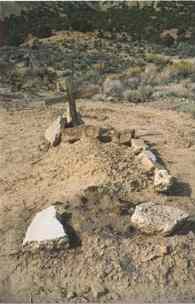SEGO
|
SEGO |
|
|
|
|
NAME: Sego COUNTY: Grand ROADS: 2WD GRID: 6 CLIMATE: Mild winter and warm summer. BEST TIME TO VISIT: Anytime. |
COMMENTS:
Petroglyphs nearby. REMAINS: Much left of the town. |
|
Sego has a history unlike any other ghost town in Utah. Its history is surrounded not by gold or silver but by coal. The discovery was made in the early 1890s not by a prospector but by a rancher/farmer from England named Harry Ballard. Ballard bought the land surrounding his find and started operations on a small scale. In 1911, Ballard sold the mine to a group of Salt Lake City investors. Production started with grand plans for a long and prosperous run of coal production. The new owners built a store, a boarding house and other buildings all with their own water supply. Trouble started almost immediately when the water supply started to dry up. The water table had been dropping for some time but was ignored. There were other problems as well all of which contributed to little or no profit for the investors. Some miners were not paid for as long as a year but received script, which enabled them to buy food and other necessities for their families. Up to this time, the miners had rejected union organizers but now agreed to become members of the United Mine Workers Union in 1933. On November 1,1947, the mine was closed and the property sold at auction held at Moab, Utah. Sego is a must see ghost town. Submitted by Henry Chenoweth.  Stone building, built into the mountainside Courtesy Dolores Steele  Sego Cemetery Courtesy Dolores Steele |
|
|---|
|
|